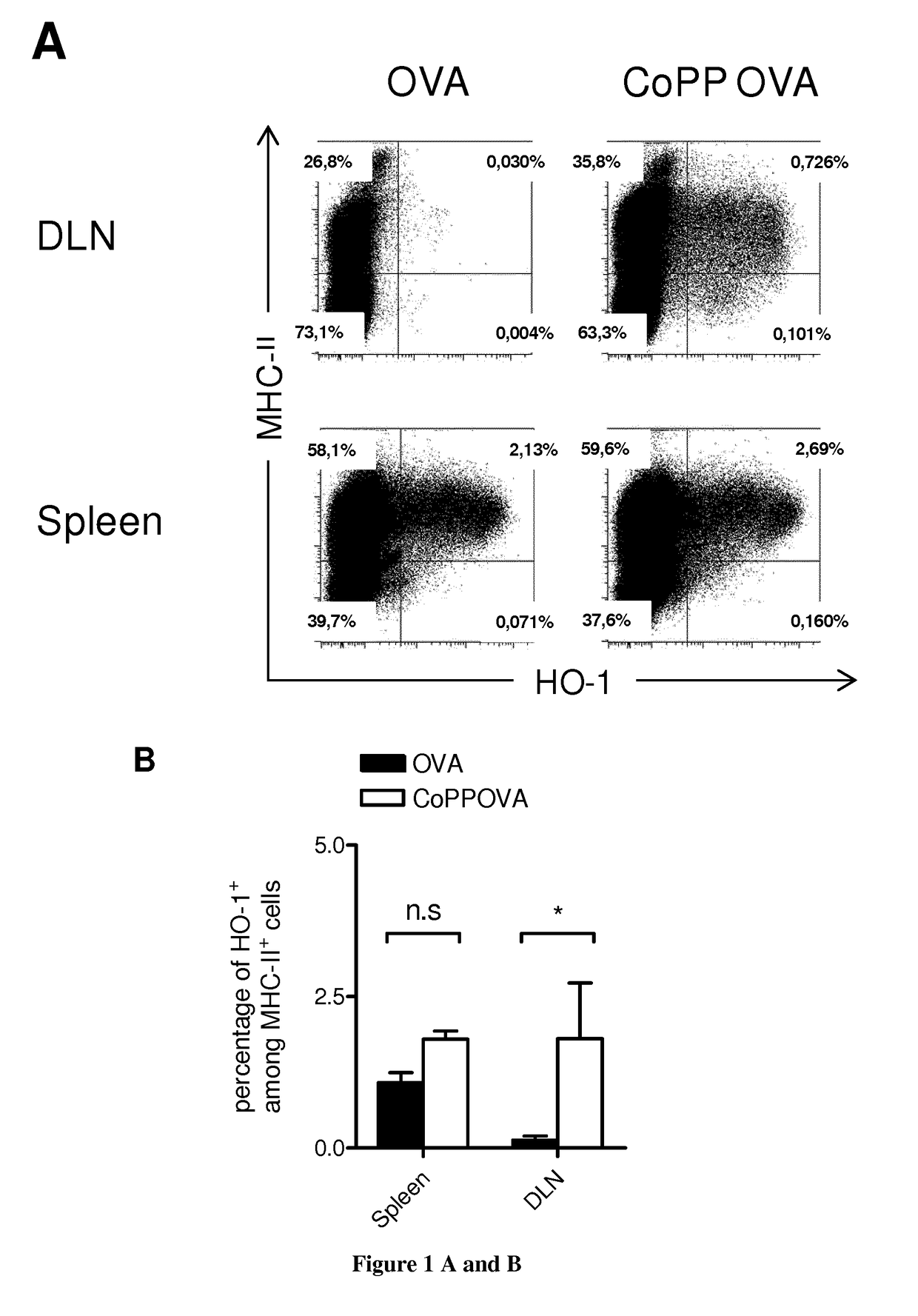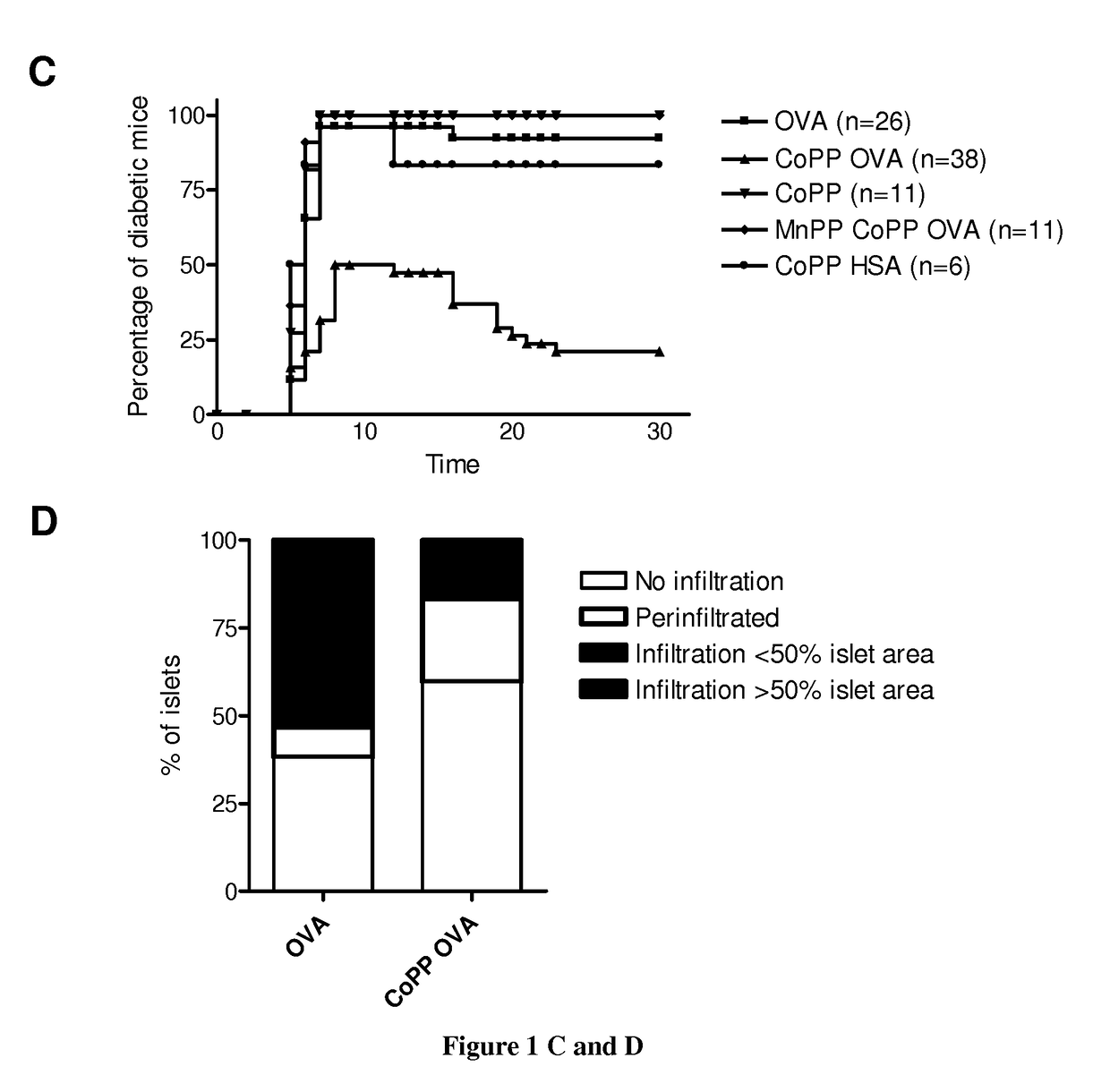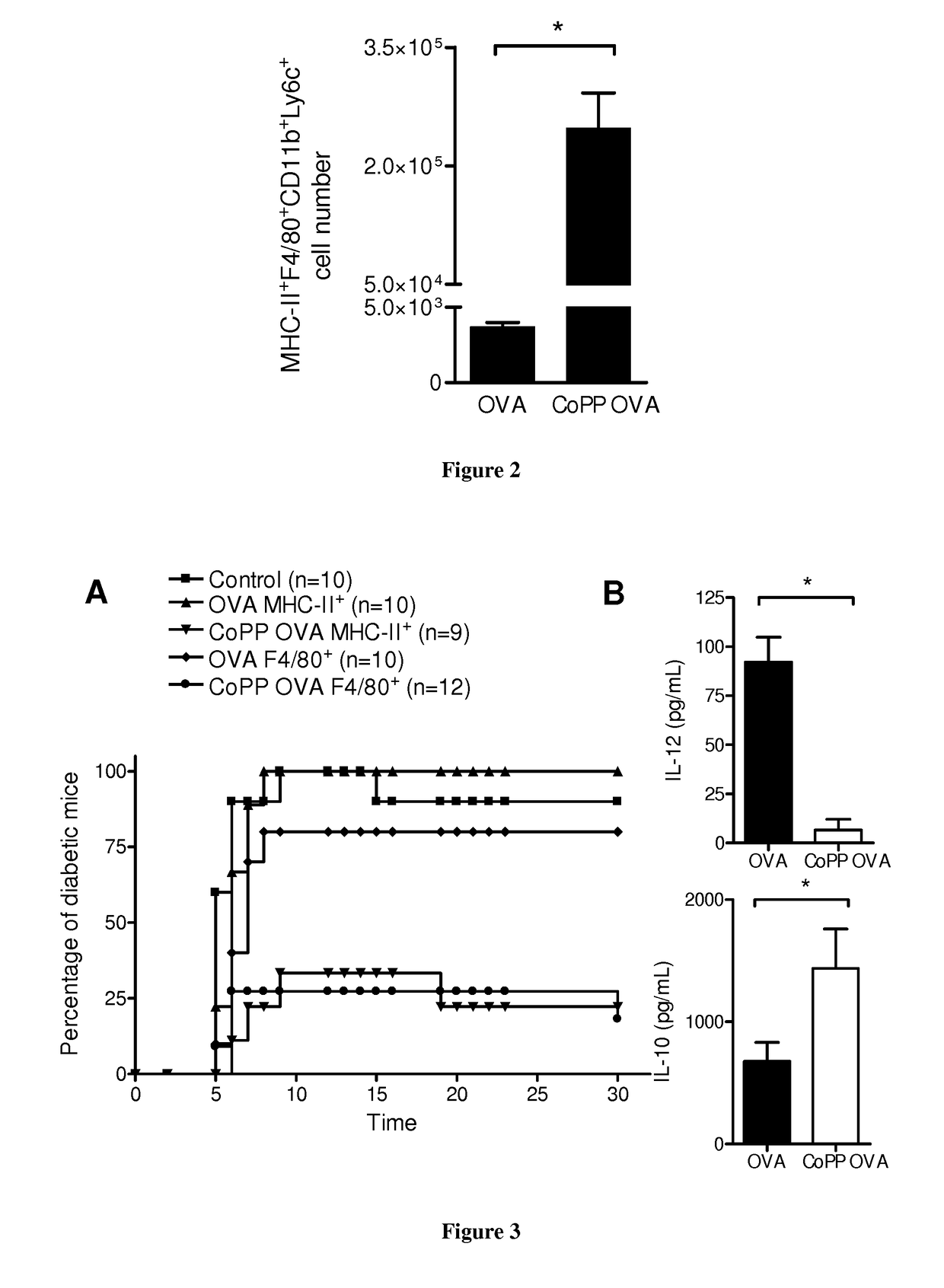Compositions and methods for antigen-specific tolerance
- Summary
- Abstract
- Description
- Claims
- Application Information
AI Technical Summary
Benefits of technology
Problems solved by technology
Method used
Image
Examples
example 1
ion of Ongoing CTL Response in Type 1 Diabetes (T1D) by Monocyte-Derived Dendritic Cells Induced by Intradermal Injection of Heme-Oxygenase-1 Inducer
[0138]Material & Methods
[0139]Cells:
[0140]Autoreactive CTL generation: Autoreactive CTLs were generated as described previously (34). Briefly, CD8+ cells were isolated by magnetic selection (Miltenyi Biotech) from OVA-specific class I-restricted T cells (OT-I) mice (35) spleen and lymph node single-cell suspensions. 1×106 purified OT-I CD8+ T cells were stimulated with 5×106 mitomycin-treated and ovalbumin (257-264) peptide-loaded syngeneic spleen cells in 2 ml complete DMEM high glucose with stable glutamine (PAA) supplemented with 10% FCS (Eurobio) containing, 5 ng / ml IL-2 (Roche Applied Science), and 20 ng / ml IL-12 (R&D Systems). On day 3, the cultures were split into four aliquots and fed with fresh medium containing IL-2. On day 6, cells were collected and washed with culture medium at three times.
[0141]Isolation of murine APCs and...
example 2
ion of Ongoing CTL Response in Experimental Autoimmune Encephalomyetis (EAE)
[0182]Material & Methods
[0183]Animals: C57BL / 6 mice were maintained under safety condition approved by the Inserm and European Union Guidelines. Mice were used between 6 and 10 weeks of age.
[0184]Experimental Autoimmune Encephalomyelitis (EAE) induction: Briefly, C57BL / 6 were immunized by a subcutaneous injection of emulsified complete freund adjuvant (CFA, sigma aldrich) complemented with mycobacterium tuberculosis (400 μg, BD) and MOG35-55 peptide (200 μg, genecust). Pertussis toxin is injected (200 ng i.v, VWR) at the time of immunization and two days later. Clinical signs of EAE were evaluated daily and scored as follows: 0, normal; 1, limp tail; 2, partial paralysis of the hind limbs; 3, complete paralysis of the hind limbs; 4, hind-limb paralysis and forelimb weakness; 5, moribund or deceased
[0185]Treatments: For prophylactic treatment, mice were treated at the time of immunization with one injection i...
example 3
ion of Ongoing Th1 Response in Delayed-Type Hypersensitivity (DHG) in Non-Human Primates
[0189]Material & Methods
[0190]Animals: Non-Human primates: Baboons (Papio anubis, from the CNRS Primatology Center, Rousset, France) were negative for all quarantine tests. Animals were housed at the large animal facility of our laboratory following the recommendations of the Institutional Ethical Guidelines of the Institut National de la Santé Et de la Recherche Médicale, France.
[0191]Intradermal immunization with Normosang®: Three Baboons were injected intradermally in the inguinal fold with respectively 6.25 mg (500 μL), 12.5 mg (500 μL) or 25 mg (1 mL) of clinical hemin (Normosang®). A non-treated baboon has served as control.
[0192]Inguinal lymph nodes were surgically removed 24 hours after intradermal injection. Single-cell suspensions for flow cytometry analysis were prepared by enzymatic lymph node disaggregation with Collagenase D (Sigma-Aldricht). All experiments were performed under gen...
PUM
| Property | Measurement | Unit |
|---|---|---|
| Therapeutic | aaaaa | aaaaa |
Abstract
Description
Claims
Application Information
 Login to View More
Login to View More - R&D
- Intellectual Property
- Life Sciences
- Materials
- Tech Scout
- Unparalleled Data Quality
- Higher Quality Content
- 60% Fewer Hallucinations
Browse by: Latest US Patents, China's latest patents, Technical Efficacy Thesaurus, Application Domain, Technology Topic, Popular Technical Reports.
© 2025 PatSnap. All rights reserved.Legal|Privacy policy|Modern Slavery Act Transparency Statement|Sitemap|About US| Contact US: help@patsnap.com



